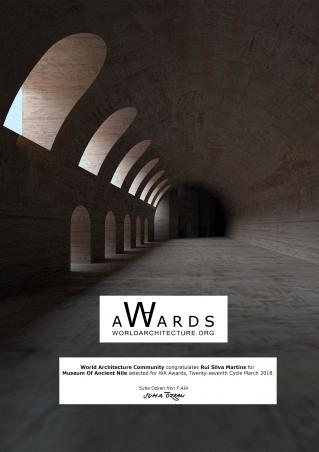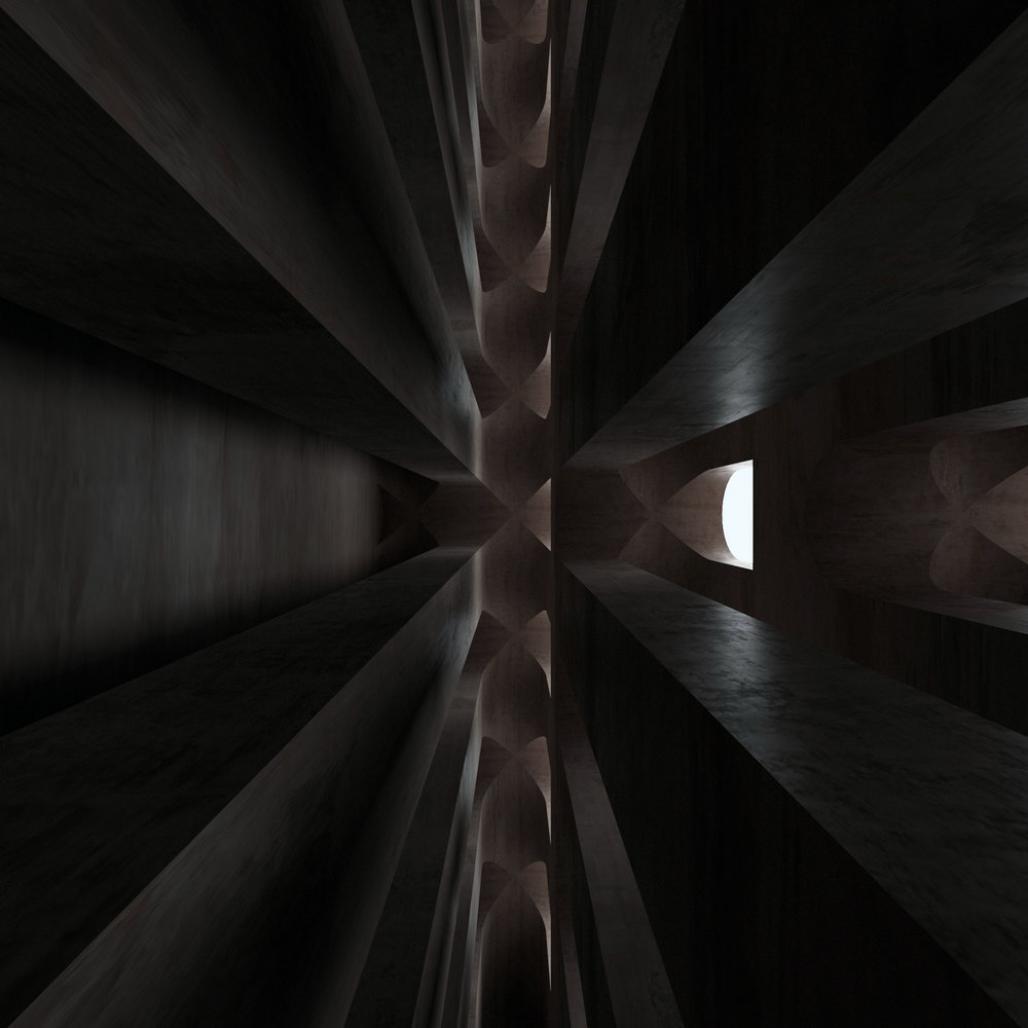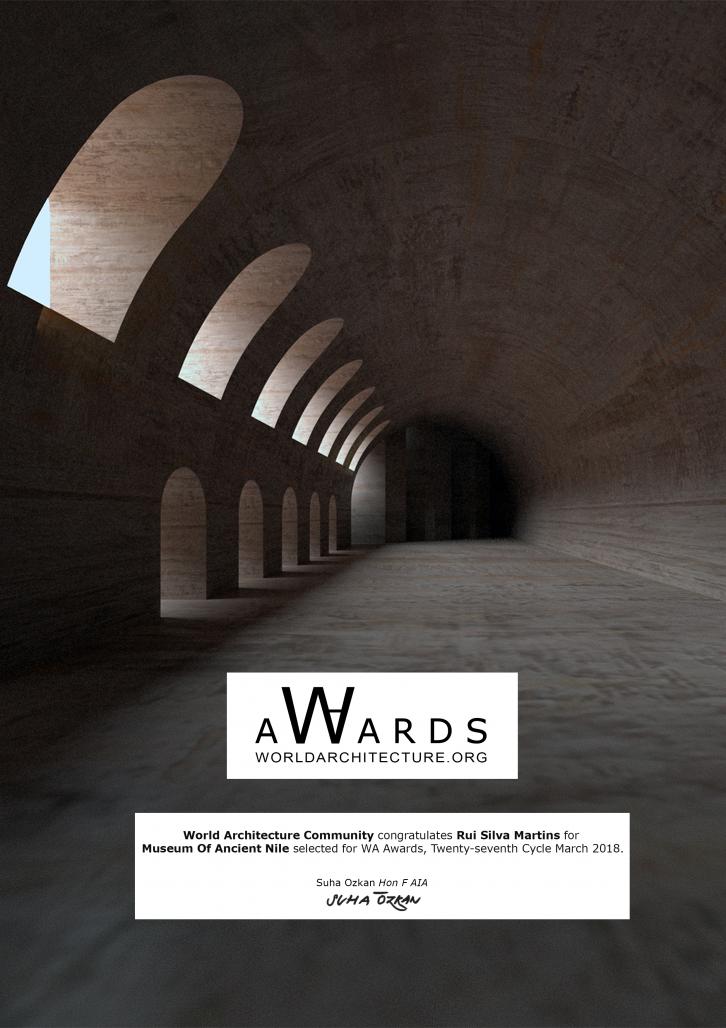2017
2017
The river, the mountains, the desert.
Seeing the Nile, his water, his stream bed. Contemplate life´s abundance, the desert and the rocks, to caress his faces. The river is life and death, the water has a primitive meaning, the Nile is a sacred Temple.
Celebrate the Nile, is to celebrate the rebirth and death. The museum is a Temple, which celebrates the sacred connection between man and the river, between the body and the soul.
As a navel (umbilicus mundi, in Greek), the museum is a centre, marks the territory and the landscape, a new centre on earth, points to the four directions, the four cardinal points. The entrances to the museum, allude to these directions, being south facing the slope, for river contemplation.
To enter, we go down a long staircase, to give entry into a tunnel, escaping the exterior world, we dive into our being. Upon arriving at the end of the walk, under ourselves and the darkness of the tunnel, we arrive to a patio, where we can contemplate the whole museum, the light and in the centre, the water. We can understand that the building is structured like an inverted pyramid.
From here we have access to stairs, which rise to the interior of the museum. In the rising sun entrance, we access the great gallery, a vaulted space with a large amplitude, where light is diffused through the holes, spreading the air and the sound. The building is to be lived through all senses. At the west entrance, we have the galleries, two vaulted spaces with permeability between them.
In the north and south entrances, we contemplate a forest of pillars, as a nature reflection, where the vertical and the light, filtered by the pillars, resembles forest atmosphere. In the middle, we see the stairs that run through the entire museum, allowing to penetrate the building space.
Above at west, the ateliers are creativity spaces. At the rising sun side, a place to see and engage in dialogue, as the Greek Agora.
Through the museum representation, we can try to image it and try to feel it…
Museum of Ancient Nile by Rui Silva Martins in Portugal won the WA Award Cycle 27. Please find below the WA Award poster for this project.

Downloaded 8 times.
Favorited 2 times


















